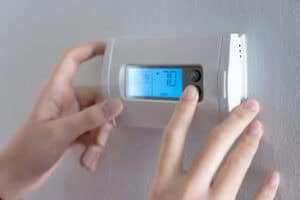Your air conditioner has a bigger impact on your household budget than you might realize. When summer arrives, it can quickly become your single largest energy expense. If you’re tired of watching your electricity bill skyrocket, the best defense is a little proactive maintenance, which directly translates into significant cost savings.
Think of your system’s air filter as the gatekeeper to your wallet. When it’s clogged with dust and debris, it forces your AC to work much harder to pull in air, driving up energy consumption. By simply changing that filter regularly, you can lower your cooling costs by up to 15%. Similarly, clearing debris from around your outdoor unit allows it to release heat efficiently, so it doesn’t have to run for longer than necessary, saving you even more money each month.
The real financial benefit, however, comes from avoiding catastrophic expenses. A professional tune-up is a small, predictable investment that protects you from huge, unexpected repair bills. During a tune-up, a technician can spot a worn-out part or a minor refrigerant leak before it causes a major system failure, like a dead compressor. The cost of that minor fix is a tiny fraction of a multi-thousand-dollar emergency replacement.
Ultimately, this regular care extends the lifespan of your entire system. By investing a little in maintenance now, you push back the massive expense of a full replacement by years. These simple steps don’t just keep you cool; they put money back in your pocket, month after month, and protect you from the budget-breaking costs of neglect.
- Clean or Replace Your Air Filter: This is the most crucial maintenance task. A clogged filter blocks airflow, forcing your AC to work harder, consume more energy, and potentially causing the system’s coils to freeze over. Check your filter monthly and replace it when it’s dirty.
- Keep the Outdoor Unit Clear: Your outdoor condenser unit needs to breathe. Remove any leaves, grass clippings, or other debris that has collected around it. Gently hose down the exterior fins to wash away accumulated dirt and dust, ensuring there is at least two feet of clear space on all sides for proper airflow.
- Check the Condensate Drain Line: Your AC removes humidity from the air, which exits through a condensate drain line. Check to ensure this line is not clogged with algae or debris, as a blockage can cause water to back up and lead to water damage in your home.
- Schedule a Professional Tune-Up: While these DIY tips are effective, nothing replaces an annual inspection from a certified technician. A professional can check refrigerant levels, test electrical components, clean indoor coils, and catch small issues before they become expensive breakdowns.

